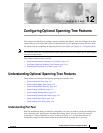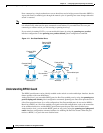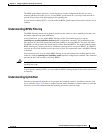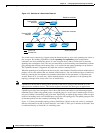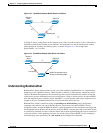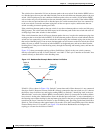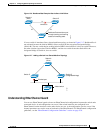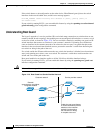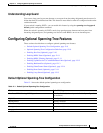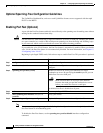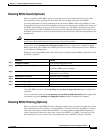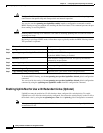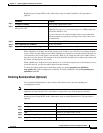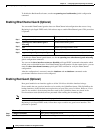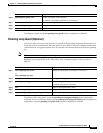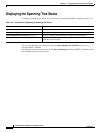
12-9
Catalyst 2940 Switch Software Configuration Guide
78-15507-02
Chapter 12 Configuring Optional Spanning-Tree Features
Configuring Optional Spanning-Tree Features
Understanding Loop Guard
You can use loop guard to prevent alternate or root ports from becoming designated ports because of a
failure that leads to a unidirectional link. This feature is most effective when it is configured on the entire
switched network.
If your switch is running PVST+, you can enable this feature by using the spanning-tree loopguard
default global configuration command.
When the switch is operating in PVST+ mode, loop guard prevents alternate and root ports from
becoming designated ports, and spanning tree does not send BPDUs on root or alternate ports.
Configuring Optional Spanning-Tree Features
These sections describe how to configure optional spanning-tree features:
• Default Optional Spanning-Tree Configuration, page 12-9
• Optional Spanning-Tree Configuration Guidelines, page 12-10
• Enabling Port Fast (Optional), page 12-10
• Enabling BPDU Guard (Optional), page 12-11
• Enabling BPDU Filtering (Optional), page 12-11
• Enabling UplinkFast for Use with Redundant Links (Optional), page 12-12
• Enabling BackboneFast (Optional), page 12-13
• Enabling EtherChannel Guard (Optional), page 12-14
• Enabling Root Guard (Optional), page 12-14
• Enabling Loop Guard (Optional), page 12-15
Default Optional Spanning-Tree Configuration
Table 12-1 shows the default optional spanning-tree configuration.
Table 12-1 Default Optional Spanning-Tree Configuration
Feature Default Setting
Port Fast, BPDU filtering, BPDU guard Globally disabled (unless they are individually configured
per interface)
UplinkFast Globally disabled
BackboneFast Globally disabled
EtherChannel guard Globally enabled
Root guard Disabled on all interfaces
Loop guard Disabled on all interfaces



